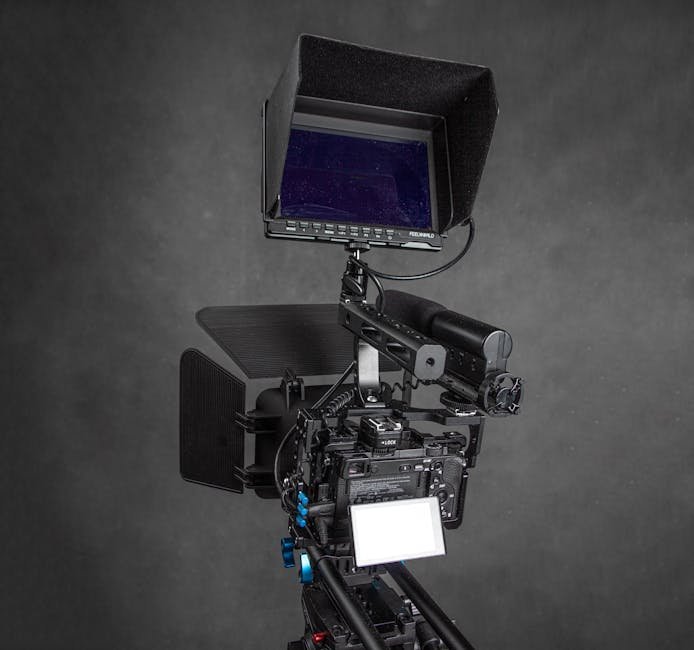Embark on a journey into the enchanting world of cinematography with these indispensable tips for aspiring cinematographers. Unleash your creativity, master the art of visual storytelling, and delve into the captivating realm of light, color, movement, and sound. Let's explore the essential elements that will guide you towards cinematic excellence.
Understanding the Basics of Cinematography
To kickstart your journey as a cinematographer, understanding the fundamental principles of cinematography is crucial. Dive into the realm of frame composition, camera angles, and the impact of lighting on visual storytelling. These elements lay the groundwork for crafting compelling narratives through the lens of a camera.
Additionally, grasp the concept of aspect ratios and how they influence the viewer's perception. Experiment with different techniques to enhance your cinematographic skills, from simple camera movements to complex visual effects. Embrace the power of visual language and its ability to evoke emotions in the audience.
Mastering Lighting Techniques for Cinematography
Lighting is a cornerstone of cinematography, setting the mood, tone, and atmosphere of a scene. Delve into the art of lighting techniques, from natural lighting to artificial setups. Understand the interplay between light and shadow, and harness its transformative power to evoke drama and intensity in your visuals.
Experiment with different lighting setups to master the nuances of chiaroscuro and high-key lighting. Learn to manipulate light to highlight focal points, create depth, and emphasize emotions. A skilled cinematographer uses lighting not just to illuminate a scene, but to sculpt it with shadows and highlights.
Remember, light is not just illumination; it is a storyteller in itself, guiding the viewer's eye and shaping the narrative. By mastering lighting techniques, you elevate your cinematographic creations to a new level of artistry and visual splendor.
Utilizing Camera Movement to Enhance Storytelling
Camera movement is a powerful tool in the cinematographer's arsenal, conveying emotion, perspective, and dynamics within a scene. Explore the diverse range of camera movements, from static shots to dynamic tracking shots and intricate dolly movements.
Understand how different camera movements influence the viewer's engagement with the story. Use techniques like pans, tilts, and zooms to create visual interest and guide the audience's focus. Each camera movement contributes to the storytelling process, enriching the narrative with visual depth and cinematic flair.
Experiment with unconventional camera movements to inject creativity and innovation into your cinematographic style. Embrace the art of fluidity in camera work, seamlessly blending movement with storytelling to captivate and enthrall your audience.
The Art of Color Grading in Cinematography
Color grading is the final brushstroke in the painter's palette of cinematography, adding depth, mood, and visual cohesion to your footage. Dive into the intricate world of color grading, where each hue, saturation, and contrast adjustment enhances the cinematic experience.
Master the art of color theory and its impact on storytelling. Explore different color schemes to evoke specific emotions and convey narrative subtext through visual aesthetics. Whether it's creating a warm, nostalgic tone or a cold, dystopian atmosphere, color grading is a transformative tool in shaping the viewer's perception.
Experiment with grading software to refine your color grading skills and develop a signature style that resonates with your artistic vision. Embrace the nuances of color manipulation, and watch as your cinematographic compositions come to life with vibrancy, depth, and visual impact.
Exploring Sound Design for Cinematic Excellence
Sound design is the unsung hero of cinematography, enhancing mood, atmosphere, and emotional resonance in a film. Immerse yourself in the auditory realm of sound design, where each sound effect, musical score, and ambient noise adds layers of depth to your visual storytelling.
Understand the role of sound in creating immersion and engagement for the audience. Experiment with different soundscapes, mixing techniques, and audio layers to craft a multisensory experience that complements your visual narrative. A skilled cinematographer knows the power of harmonizing sound and image to evoke powerful storytelling moments.
Closing Thoughts on Cinematographic Mastery
As you embark on your journey towards cinematographic mastery, remember that every frame you capture is a brushstroke on the canvas of visual storytelling. Embrace these essential tips, practice diligently, and infuse your unique creative vision into every project you undertake.
Cinematography is not just about capturing images; it's about crafting emotions, narratives, and immersive experiences that resonate with audiences. So, step behind the lens with confidence, wield light, color, movement, and sound as your artistic tools, and let your cinematographic journey unfold with boundless creativity and cinematic brilliance.
In the intricate tapestry of cinematography, each tip weaves together to form the masterpiece of a cinematographer's vision. Embrace these essential insights, and let them illuminate your path as you navigate the dynamic landscape of cinematographic creation.


